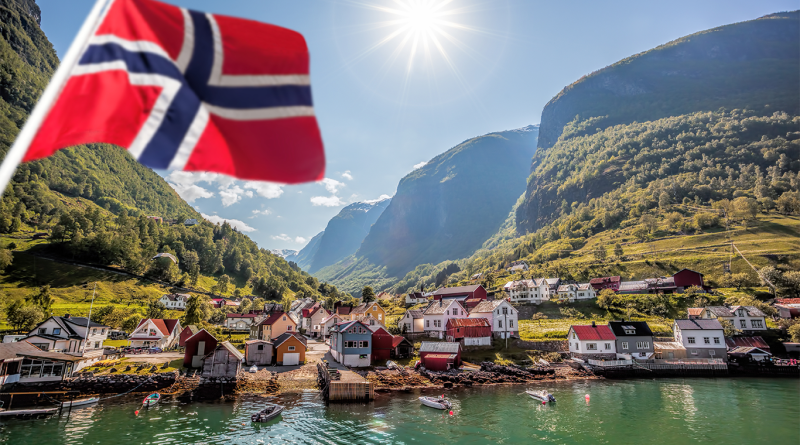Norway’s 53 New Oil and Gas Projects to Secure Europe’s Energy Supply
Norway has reinforced its role as a cornerstone of European energy security by awarding 53 new oil and gas exploration licenses. The licenses, announced by the Norwegian Ministry of Petroleum and Energy, have been granted to major energy players, including Equinor, Shell, and Aker BP.
This decision reflects Norway’s dual priorities: addressing Europe’s urgent energy needs while maintaining its position as a leading energy producer. Oil and gas exports are vital to Norway’s economy, contributing significantly to its sovereign wealth fund, the largest of its kind in the world. By issuing these new licenses, Norway aims to support European energy markets and strengthen its foothold in global energy production.
However, this strategy comes with challenges. Norway must balance its role as a fossil fuel supplier with its climate commitments under the Paris Agreement. The government has emphasized its commitment to reducing emissions through advanced technologies, such as carbon capture and storage (CCS), while continuing to responsibly develop its rich offshore resources.
Why Norway remains a critical energy supplier to Europe
Norway has emerged as Europe’s most reliable energy partner, particularly in the wake of the Russian gas crisis. Before the conflict in Ukraine, Europe relied heavily on Russian natural gas. However, geopolitical tensions and sanctions against Russia have forced European countries to seek alternative energy sources, with Norway stepping in to fill the void.
The 53 newly awarded licenses will enhance Norway’s ability to meet Europe’s growing energy demands. The North Sea, where 28 of the licenses are concentrated, remains at the heart of Norway’s production efforts. This mature region boasts well-established pipelines and infrastructure, allowing for efficient and cost-effective energy production.
In addition to the North Sea, the Norwegian Sea (20 licenses) and the Barents Sea (5 licenses) also play strategic roles. The Norwegian Sea is characterized by high production potential, making it attractive to investors and energy companies. The Barents Sea, although more challenging due to its Arctic conditions, holds vast untapped reserves that could secure Europe’s energy future.
Breaking down the licensed regions and their significance
The North Sea, with 28 licenses, remains the cornerstone of Norway’s oil and gas industry. Known for its proven reserves and advanced infrastructure, this region continues to support Europe’s energy needs while generating significant revenues for Norway.
The Norwegian Sea, awarded 20 licenses, offers a mix of established production zones and promising exploration opportunities. This region benefits from ongoing advancements in offshore technology, such as seismic imaging and autonomous drilling systems, which improve operational efficiency and reduce environmental impact.
The Barents Sea, awarded 5 licenses, represents a new frontier for oil and gas exploration. While it is rich in untapped resources, the region’s Arctic conditions and fragile ecosystem pose challenges. Despite these obstacles, Norway views the Barents Sea as an essential component of its long-term energy strategy.
Balancing energy security with sustainability goals
Norway’s latest licensing round has reignited debates about the balance between energy security and environmental responsibility. While these licenses will stabilize Europe’s energy supply, they have also drawn criticism from environmental groups concerned about the country’s commitment to climate action.
The Norwegian government has adopted a pragmatic approach, emphasizing the need to balance fossil fuel production with sustainability initiatives. CCS technology, for instance, plays a central role in Norway’s strategy to reduce emissions from oil and gas operations. Additionally, Norway is leading in renewable energy development, particularly in offshore wind technology. The government has stated that revenues from oil and gas projects will fund renewable initiatives, creating a long-term strategy for transitioning to sustainable energy.
Critics argue, however, that expanding oil and gas exploration is incompatible with global efforts to limit temperature increases to 1.5 degrees Celsius. The licenses, particularly those in the Barents Sea, have drawn opposition from environmental groups due to concerns over the region’s sensitive ecosystem. Despite this criticism, Norway remains firm in its dual focus.
Norway’s energy strategy positions it as a critical player in Europe’s energy future. In the short term, the 53 new licenses will help stabilize Europe’s energy supply, providing a reliable alternative to Russian gas.
In the long term, Norway’s dual focus on fossil fuels and renewables will be pivotal in Europe’s energy transition. The country’s leadership in offshore wind development and carbon capture technologies highlights its ability to contribute to sustainable solutions while maintaining economic stability.
Sources
To keep up-to-date with our latest energy, oil and gas news, subscribe to our newsletter today.
